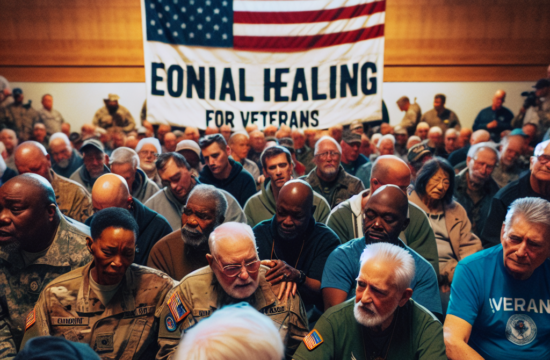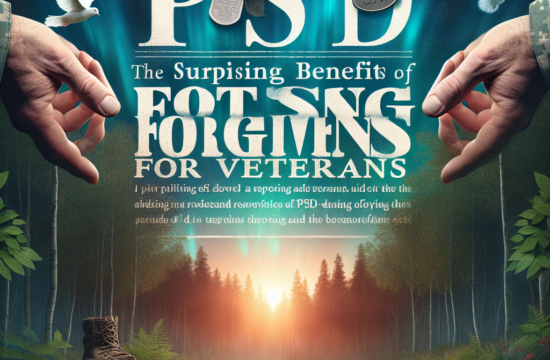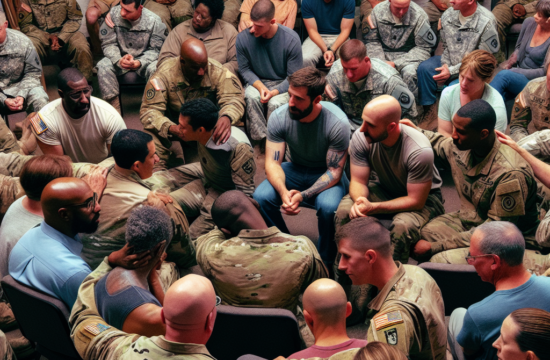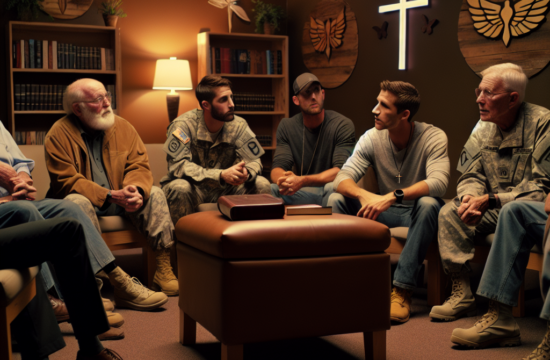==> Thank you for reading this post! Click Here If you are looking for support and Victory over PTSD.
Prayer as a Source of Peace
Establishing a Consistent Prayer Life
From my own experience, the first step to tuning into God’s peace is creating a consistent prayer life. I found that when I set aside dedicated time each day to pray, it became my refuge. The quiet moments spent in prayer not only calmed my mind but also opened my heart to divine encouragement.
During those prayer times, I would share my fears and anxieties with God. It was like venting to a trusted friend who understands me completely. Committing to regular communication with Him helped alleviate the burden of carrying my PTSD alone.
And here’s the kicker—through prayer, I learned the art of listening. I would sit in silence, allowing God’s presence to fill the space. It was during these moments that I began to feel inspired and motivated to take proactive steps towards healing.
Finding Scriptural Support
One powerful component of my healing journey involved turning to Scriptures that resonate with my experiences. The Bible is packed with verses that speak to anxiety, fear, and healing. For instance, Philippians 4:6-7 reassured me to not be anxious but rather find peace in prayer.
These verses became a lifeline. Whenever my mind raced, I’d recite the words that grounded me back to faith and hope. I started memorizing these Scriptures, carrying them in my heart to battle the daily triggers of PTSD.
Incorporating Scripture readings into my prayer life allowed me to feel connected to the broader narrative of God’s promises. It was uplifting to realize that I wasn’t alone; others in the Bible faced tremendous struggles yet turned to God for strength.
Community Prayer Support
One major game-changer for me was joining a small prayer group at my church. There’s just something about being surrounded by individuals who lift you up in prayer that adds another layer of healing. I remember the first time I shared my story; it felt like a huge weight lifted off my shoulders.
These groups often provide not only spiritual support but also emotional camaraderie. Knowing others are praying for you creates a loving sense of belonging – a comforting reminder that we’re all in this together.
Through community prayer, I discovered the power of intercession. Hearing others pray specific requests opened my eyes to how deeply God knows us, and it encouraged me to pray for them in return, which fostered mutual healing.
Cultivating Faith in God’s Promises
Understanding Biblical Promises
Exploring promises in the Scriptures brought a new light to my healing process. I learned to delve deep into the words of God that declare His unwavering support for us during trials. Deuteronomy 31:6 became a personal mantra: “Be strong and courageous; do not be afraid or terrified.” Can I get an amen?
These promises aren’t just comforting words; they remind us that God is present to guide and protect us. Embracing these truths fostered a sense of hope that I could lean on when the shadows of PTSD closed in.
It wasn’t merely about reading; I let those promises sink into my heart, which built a reservoir of strength I could draw from during difficult days. I found comfort knowing God has my back no matter how tough things get.
Journaling and Reflection
I started a journaling practice that turned out to be revolutionary for me. Writing down God’s promises alongside my experiences helped me not only process my feelings but also reflect on my growth over time. It became an incredible tool for self-awareness and gratitude.
By reflecting on my daily challenges and victories, I could visually see God’s hand at work in my life. Each entry was like a little time capsule of progress, bolstering my faith with tangible reminders of resilience.
And let me tell you, there’s something cathartic about letting your emotions flow onto the page. Journaling turned into a safe space where I could be vulnerable and honest, which was essential for healing from PTSD.
Living Out Your Faith
Putting faith into action was another essential step for me. Living out my beliefs helped reinforce my trust in God, turning theoretical faith into a lived experience. Honestly, it was a liberating journey to step out and serve others, even while feeling broken myself.
By volunteering and helping those struggling with similar issues, I found renewed purpose. It was a significant morale boost when I saw firsthand the difference a little compassion can make in someone’s life.
Each time I reached out to others, I couldn’t help but sense God’s hand nudging me into action—a powerful reminder that healing is often a communal experience. Getting involved in my church community opened doors for connection and collaboration that enriched my own spiritual journey.
Seeking Professional Guidance
Counseling from a Faith-Based Perspective
Seeking professional help was a tough choice but incredibly beneficial. I sought out a counselor who aligned her approach with my faith—she understood where I was coming from and often integrated biblical principles into our sessions.
The safe space created in these meetings allowed me to unpack memories and feelings I had buried for too long. The guidance I received helped me reframe my experiences through the lens of love and compassion, significantly shifting my perspective on healing.
It became evident that a trained professional could provide tools and strategies that complemented my spiritual journey. From cognitive restructuring to mindfulness practices, each session left me feeling more proactive about my healing process.
Get Support and Help with Recovery! Visit us for more Information and Support
Accountability Partner
Finding an accountability partner was another huge step. I paired up with a friend from church, and we built a mutual pact to check in on one another regularly. This partnership established a support system that kept us both grounded in our healing journeys.
During our catch-ups, we would lean on each other—sharing victories, processing struggles, and praying together. It felt wonderful to have someone alongside me, cheering each other on. It’s comforting to know you’re not in this fight alone.
This accountability helped me stay committed to my goals, whether engaging in prayer, journaling, or practicing self-care. It empowered me to embrace vulnerability, helping me turn PTSD into a story of resilience.
Understanding Mental Health Resources
When I embraced the idea of seeking professional guidance, I learned so much about mental health resources. I began researching community services, support groups, and workshops focusing on PTSD and faith, which opened up new avenues for healing.
Pursuing these resources offered me additional layers of support throughout my journey such as educational materials and peer relationships that made the experience feel less isolating. I even discovered local faith-based organizations dedicated to helping people like us navigate these difficult waters.
Access to these resources reassured me that it’s perfectly okay to seek help. The more informed I became, the more empowered I felt—reminding me that asking for help is a courageous step towards recovery.
Embracing Hope and Acceptance
Learning to Accept Struggles
Embracing acceptance was a challenging yet liberating step. I had to remind myself that it was okay to feel uncomfortable and struggle along the way, especially in the face of PTSD. Accepting my journey allowed me to forgive myself for the hard days and look forward to brighter ones.
This journey isn’t linear, and I learned that stumbling is part of growth. Looking back, I can see how those moments of acceptance fortified my resilience, allowing me to embrace my feelings rather than suppress them.
Through acceptance, I learned to navigate the ups and downs with grace. It allowed me to approach my healing journey as a series of lessons rather than obstacles—an ongoing growth process rather than a destination.
Finding Daily Joy
Amidst the struggles, I committed to seeking daily joy. I focused on little things—the sun shining, a warm cup of coffee, the laughter of friends. Sometimes, I even made a “joy jar” where I would jot down positive moments throughout the day, emphasizing gratitude over anxiety.
These exercises not only shifted my perspective but reshaped how I approached the world around me. I started seeing beauty in the mundane, which created a profound sense of contentment in my life.
Finding joy daily has been healing in itself—reminding me of God’s grace that underlies every moment. Plus, it helps me stay grounded when shadows from PTSD try to creep back in.
Trusting the Process
Ultimately, I learned the beauty in trusting the process. Who knew the road to healing isn’t about reaching a finish line, but rather finding strength in each little step? I began to embrace the idea that God has a unique timing for each of us.
As I embraced this notion, my approach to healing became more compassionate. Instead of striving for perfection, I began to celebrate “progress over perfection,” appreciating where I was on the journey.
By trusting God’s plan, I’ve discovered that my past doesn’t define me, but rather, each step I take shapes the future ahead—a testament to the power of faith and resilience.
Frequently Asked Questions
What is the role of prayer in the healing process for PTSD?
Prayer serves as a source of peace and connection to God, allowing individuals to voice their struggles and find comfort in faith. It’s a personal refuge for many seeking solace from PTSD.
How can Scripture be beneficial in overcoming PTSD?
Scripture provides encouragement and promises from God that reassure us during tough times. Verses can serve as grounding reminders of hope and strength amidst anxiety.
How can community support aid in healing?
Community support creates a sense of belonging and shared experience, which can significantly alleviate feelings of isolation. Coming together in prayer and sharing stories strengthens bonds and fosters healing.
Why is professional guidance important in this journey?
Professional guidance from therapists who share a faith-based perspective can provide essential tools and strategies to navigate healing. They bring expertise that can complement spiritual growth and help process experiences effectively.
What practical steps can I take to embrace hope during healing?
To embrace hope, focus on cultivating daily joy, learning to accept your struggles, and trusting the healing process. Each of these steps contributes positively to your mindset and overall well-being.













